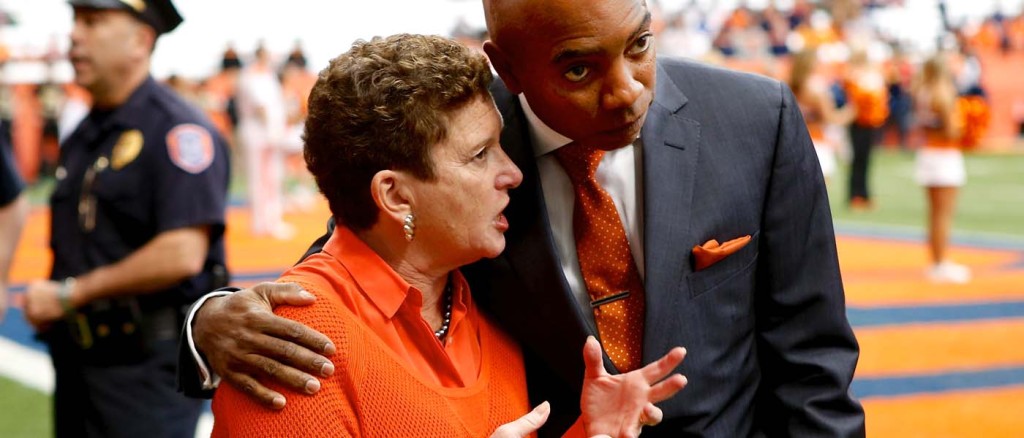As dancers marched in place–pranced, really–in front of a wall-sized mirror at the Redhouse Arts Center, learning the tricky steps for a flash-mob performance of Michael Jackson’s “Thriller,” Megan Steinberg watched quietly with a handful of brochures in her hand.
The dancers pounded their heels on the wooden floor, pivoted and clapped in unison as the song rang out from a boombox.
This, whether the dancers knew it or not, was a stop on the Connective Corridor, one of Syracuse University Chancellor Nancy Cantor’s spotlight ideas for breaking barriers between college and city.
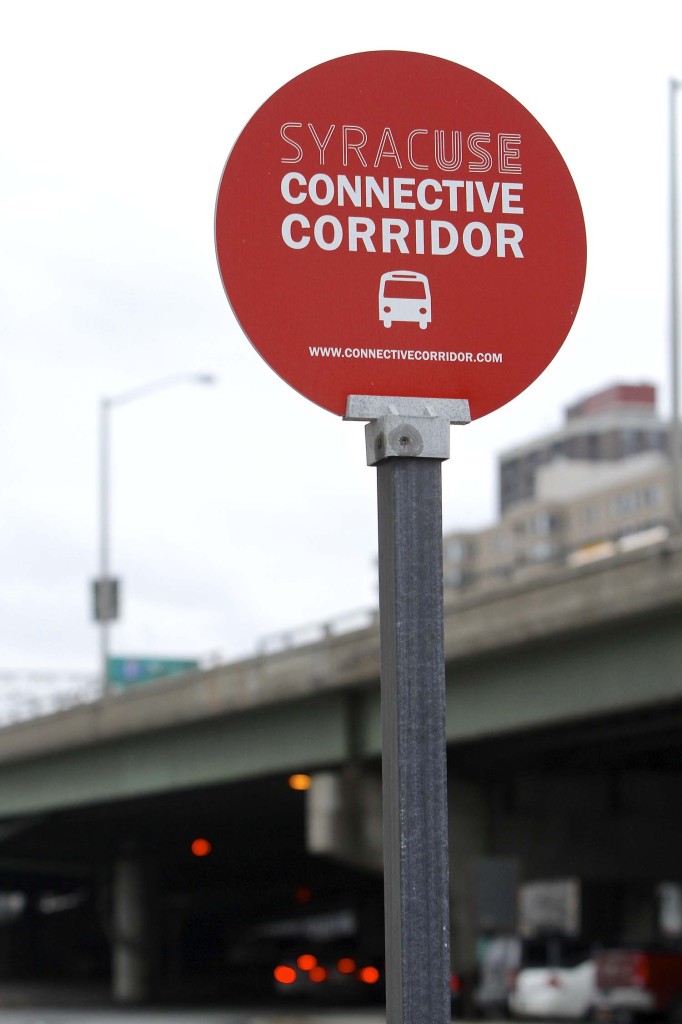
“OK, let’s take it again from the top,” the instructor announced to several dozen dancers, some brushing gray hair out of their eyes and some pulling up their leggings.
The flash-mob was part of the CRAVE festival, in late September. The fest took place at sites on SU’s campus and those hugging the Connective Corridor.
Steinberg said she believes wholeheartedly that the Connective Corridor works to bridge the gap between SU and the community’s rich resources. As an SU student (she graduated in May with a degree in illustration), she frequently hopped the free bus that travels from campus through the city streets. Sometimes she rode to classes at The Warehouse, on West Fayette Street; other times, she rode to experience the city.
“I used it very frequently,” she said. “It’s a great connection between Syracuse University and the community.” It helped her reshape her view of the city, she said, and to realize that amid its concrete and bricks exists an arts movement.
“There used to be a disconnect between the students and the community,” she said. But the Connective Corridor helped lower barriers and encouraged students to sample life beyond the campus, and open paths to SU as well, she said.
High Ambitions
The Connective Corridor is among a blizzard of community outreaches that sprang to life in the early months and years of Cantor’s 10 years at the top of the SU pyramid. It is one of the more visible ones, as a partnership between SU, the city, National Grid, Time Warner, Centro, Onondaga County and state and federal money created a footprint in asphalt and concrete down University Avenue from Waverly Avenue to East Genesee Street and beyond. The Connective Corridor is one of the keystones of Scholarship in Action, a concept championed by Cantor that aimed to bridge gaps between a wealthy and privileged university and a surrounding city that is rich in history and civic energy, but achingly short on cash.
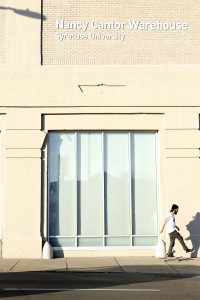
Like some of the more conspicuous outreach efforts–including the Say Yes to Education program in the city’s schools; the Southside Partnerships, of which the entrepreneurial South Side Innovation Center is a part; and the Near West Side Initiative–the Connective Corridor has left an imprint on the city. These programs have had their ups and downs and attracted both supporters and critics with a surprising amount of passion behind their opinions.
And as Cantor departs to head Rutgers University-Newark, in New Jersey, and SU chancellor Kent Syverud prepares to take his own place here, those programs are still affecting the community. Many people whose livelihoods are linked to them are wondering: Will Syverud give his blessing to Scholarship in Action, or will the focus return to building the university’s clout and influence within its walls and in the far-flung power centers in New York City, Los Angeles and elsewhere?
Syverud declined to be interviewed for this story. Cantor agreed to an interview, then cancelled it.
Little to Show for Lots of Money?
The Connective Corridor, Jeffrey Stonecash believes, represents “the worst of Nancy Cantor” and her Scholarship in Action plan. It’s one of a number of “unplanned, un-thought-out ventures that threw a lot of money around,” he said.
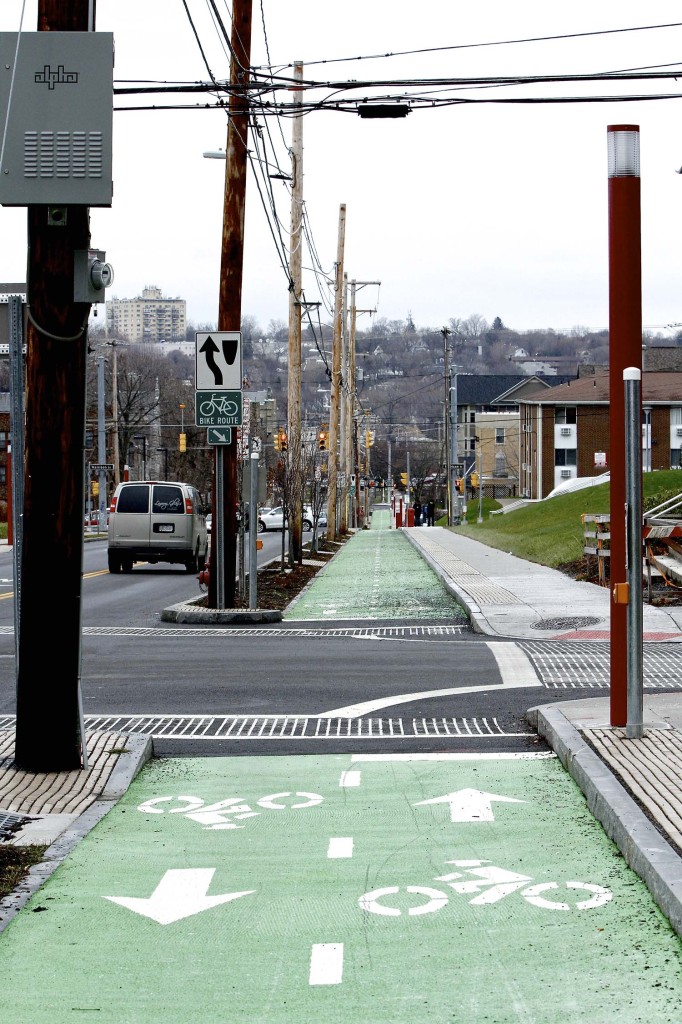
Stonecash, who retired in May after teaching many years at SU’s Maxwell School of Citizenship and Public Affairs, said that Cantor “shut out anybody who disagreed with her” on the Corridor.
Say Yes to Education in Syracuse is another program that received early and extensive backing from Cantor, Stonecash said, that is “untested.” The program requires a deep investment in money and energy from the schools, he said, a commitment that will be difficult to sustain over time.
“The school district is devoting more and more dollars with no evidence that it works,” he said. For a school district that is struggling financially and in so many other ways, “it’s the worst possible thing to do to the schools and the teachers,” Stonecash said.
Cantor’s relentless focus on what the university can do to serve the greater community has put SU’s finite resources under extreme pressure, he said. The endowment is smaller than it was a few years ago, he said, and “there’s no money for teaching.” SU’s financial report notes a recent high point for the endowment at more than $1 billion in 2007, before the recession hit; it was at $940 million in 2012.
Stonecash lays the blame for SU’s problems at Cantor’s feet. “She thinks she is some kind of messiah to get people in touch with reality,” he said, when SU had a reputation for enriching the larger community long before Cantor came to Syracuse.
Stonecash thinks Syverud will have a difficult task as he assumes the role of chancellor. “Whoever comes in is going to face the same problem that {previous chancellor} Buzz Shaw had: Bite the bullet, start finding things to reallocate,” Stonecash said. “It’s going to take a serious rearrangement of priorities.”
Money, and Lots of It
The economic impact of these programs is staggering, by SU’s reckoning. SU recently estimated that the economic impact of the Say Yes to Education program through the 2012 fiscal year was $50 million; the Southside Partnerships, $3.7 million; the Connective Corridor, $46.2 million; and the Near West Side Initiative, $52.2 million.
Each of them, and other programs, have brought students, faculty and university resources into the community, knitted together home-grown alliances of businesses and civic muscle and spread some impressive and quirky marks throughout Syracuse.
But Scholarship in Action has also attracted criticism and cynicism. One of the lightning rods has been the debate over what a university owes its community, if anything. Some say the relentless focus on the greater community has hurt academics, undercut the university’s mission of research and teaching and pushed the institution into making impossible choices between Scholarship in Action and its own scholarship.
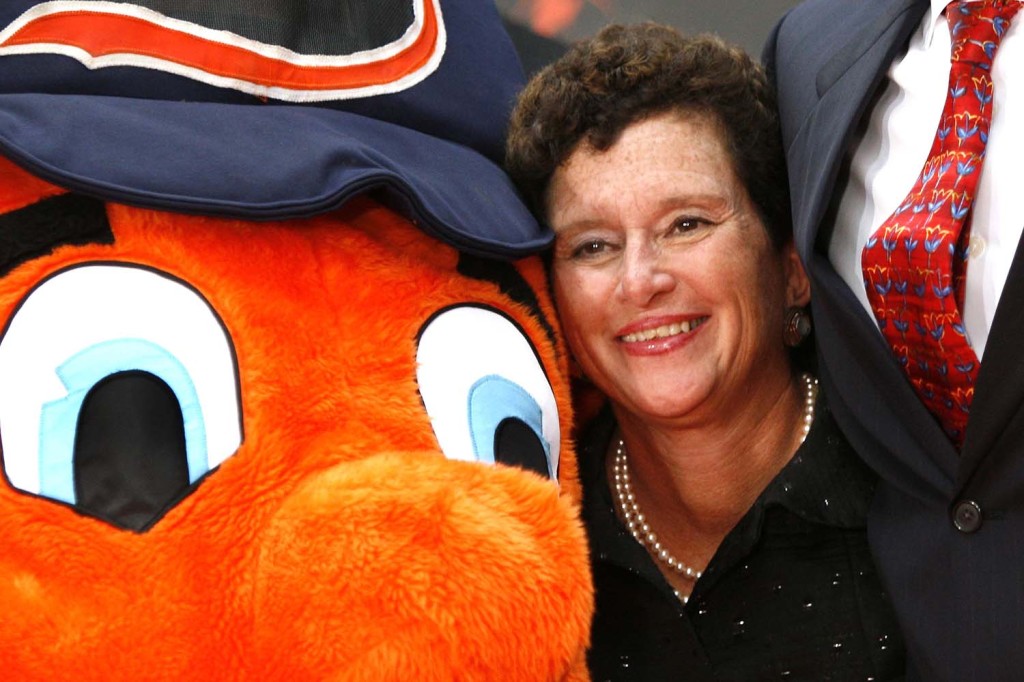
It’s not just a local debate. A 2011 story in the Chronicle of Higher Education noted that enrollment at SU increased by about 20 percent on Cantor’s watch, that minority enrollment also rose and that SU nearly tripled the amount it spends on need-based aid to students. But the acceptance rate also climbed, the article noted, and then returned to about its longtime average.
The article quoted critics saying the higher acceptance rate suggested that SU was slipping as a tough academic school; it also noted that the university fell in the U.S News & World Report rankings. Critics in the story said that resources seemed to be going increasingly to community projects pushed by Cantor rather than to build up the university.
But others say that invigorating the community buoys the university in ways that are difficult to measure in the short term but invaluable in the long run. One of those ways is to improve the lives of children who will soon be Central New York’s adults.
Lifting the City’s Children
Students in Syracuse’s Say Yes to Education project, another of Scholarship in Action’s touted programs, have racked up some noteworthy achievements.
The organization’s five-year progress report, issued earlier this year, notes that more than 2,100 students who graduated from city high schools since the program began in 2008 have received Say Yes money to help them attend college. And the number of recent graduates from the city schools who are attending college has climbed, too, from 437 in 2009 to 579 in 2012.
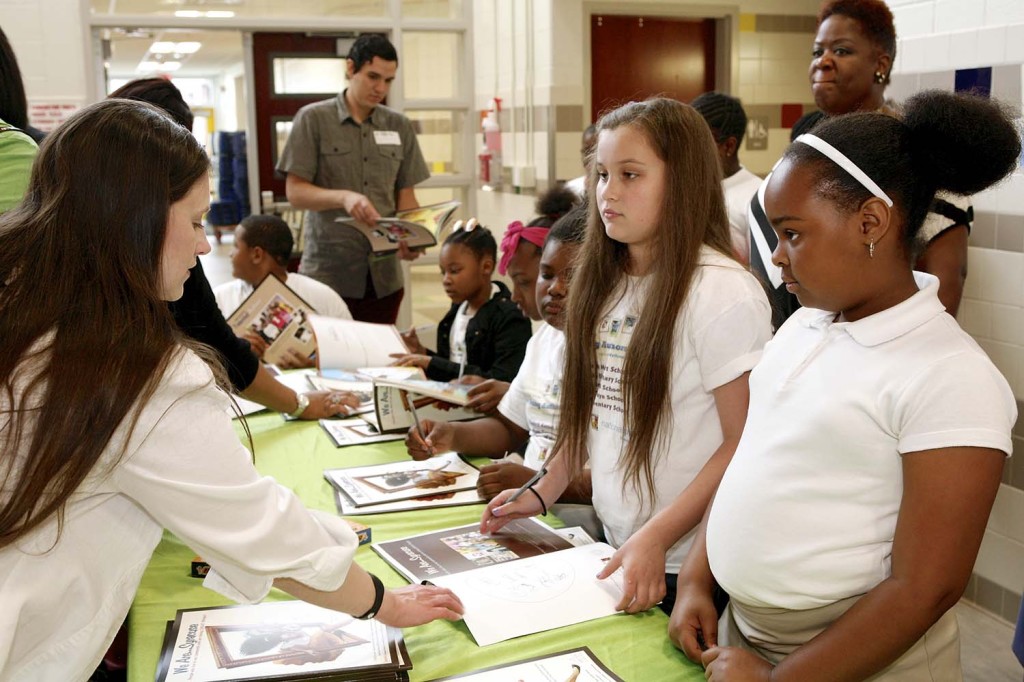
The results are more than just an increase in kids heading to college. The report says that 93 Say Yes scholars graduated in 2013 from four-year colleges, and that Say Yes students are staying in college at a higher rate than the average.
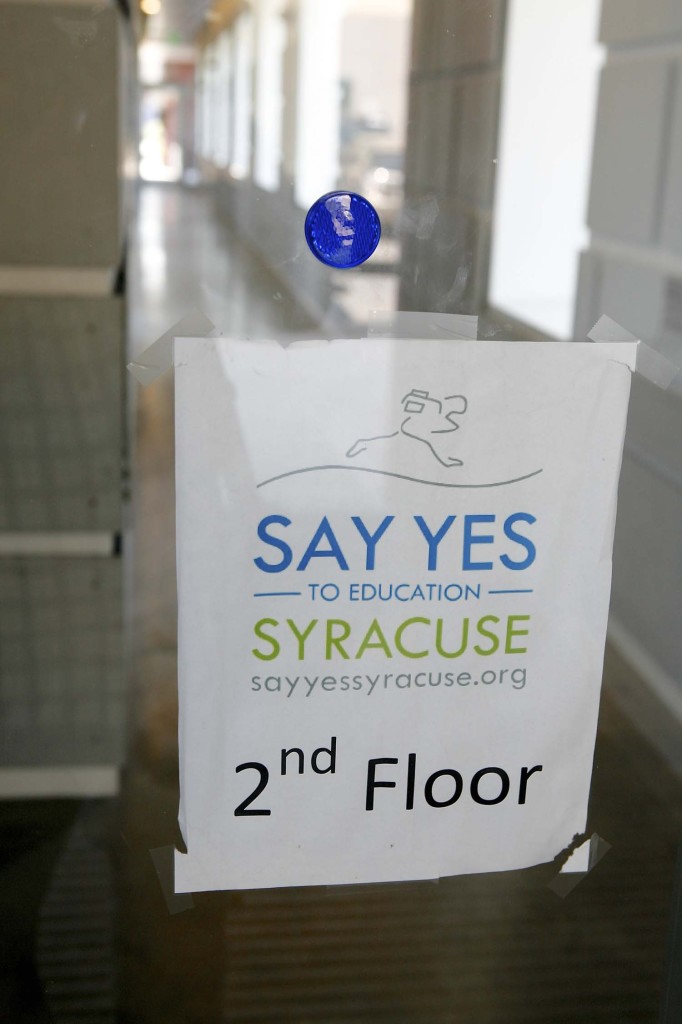
The benefits of Say Yes begin while students are still in school, the organization’s report says; 70 percent of students in the city schools in kindergarten through fifth grade have attended after-school sessions to sharpen academics and social and emotional skills and 38 percent of students in those grades have participated in summer programs. And more than 90 percent of students who did not have health insurance coverage have acquired it, thanks to Say Yes, which also aims to boost the quality of students’ lives along with test scores.
Both attendance rates and some measures of academic achievement have risen in the city schools since Say Yes began, the report states. Students ranked as proficient or above on the state English Regents exam rose 3 percentage points, to 66 percent, in 2011-2012 compared with 2008-2009, and similar scores in algebra increased from 34 percent to 42 percent over that same time.
Say Yes backers see those numbers as proof the program is making a difference.
“Chancellor Cantor’s legacy in Syracuse will always remain significant, especially given her commitment to the success of the young people living and learning here in our community,” Pat Driscoll wrote by email in response to a question about Cantor’s contributions. Driscoll is director of operations for Say Yes to Education’s Syracuse chapter.
“Her advocacy for Scholarship in Action and community engagement will serve as models for other universities looking to have a positive impact on the lives of young people and their respective communities.”
Cantor was central to Say Yes’ national organization’s decision to try a bold experiment in Syracuse. Douglas Biklen was just out of earshot one night about six years ago when a memorable conversation took place between Cantor and Mary Anne Carey, the new leader of the Say Yes national organization. Cantor and Carey bumped into each other at an event in Manhattan, and Cantor asked Carey about her latest project.
Carey told Cantor that she was looking for a city in the Northeast to try a wildly ambitious experiment: establishing a Say Yes chapter that would work with young students across an entire city rather than in just a few select schools. Cantor, the story goes, told Carey that Syracuse would be an ideal place.
Biklen, dean of SU’s School of Education, said he was sitting a few tables away that day in Manhattan, and was in the room when Carey made her first trip to Syracuse. Under Biklen’s guidance, the School of Education became the administrative arm that funneled SU’s resources into the project. He says that Say Yes has knitted together a powerful partnership that includes city hall, county government, SU, the city schools and contributors throughout the region’s business community.
“One of the things that {Say Yes} did was bring together all the actors” who wanted to improve the lives of children in the city schools, Biklen said. “That continues to this day.”
One of the benefits created by Say Yes was to make health care available to every child in the schools, Biklen said. Say Yes and its partners made that a reality, he said, along with access to legal services for parents of pupils. Say Yes also expanded opportunities through its after-school programs that offer academic help and exposure to the arts and its summer sessions that open the doors of SU classrooms to pupils in first through fifth grades.
And the offer of free college tuition to students whose families meet income criteria has been a powerful incentive to keep students on track for higher education, he said, an offer that has led to a more than 20 percent jump in the number of city public school students heading to college.
“I think that’s significant,” Biklen said.
Cantor’s commitment to Say Yes has continued over the years, Biklen said. He described her as “absolutely the moving force” for Say Yes from the start.
Renewal on the Near West Side
Maarten Jacobs remembers the moment when he was truly convinced that the Near West Side Initiative had conquered its first mountain.
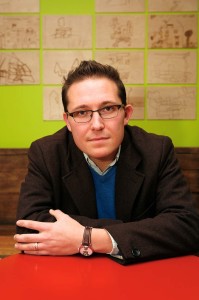
The initiative had been under way for about three years when he came on board as its director four years ago. It was a night during the 2010 Christmas season that he describes, in the phrase that his boss Marilyn Higgins uses, as the “seeing-is-believing moment.”
It was the grand opening of the Lincoln Supply building, a once-vacant and decrepit four-story, 30,000-square-foot warehouse that was transformed into 10 upscale loft apartments and two floors of commercial space under the aegis of the initiative. The renovation cost about $4 million. The first two commercial occupants were Say Yes to Education and La Casita Cultural Center, and the apartments–with rents ranging from $1,075 to $1,225 per month–were quickly snatched up.
The building, at 109 Otisco St., was an eyesore among many; now it fairly gleamed with new infrastructure and green technology. Jacobs said the building was the initiative’s first big project that came to fruition, opening its doors to neighbors and the wider community for the first time.
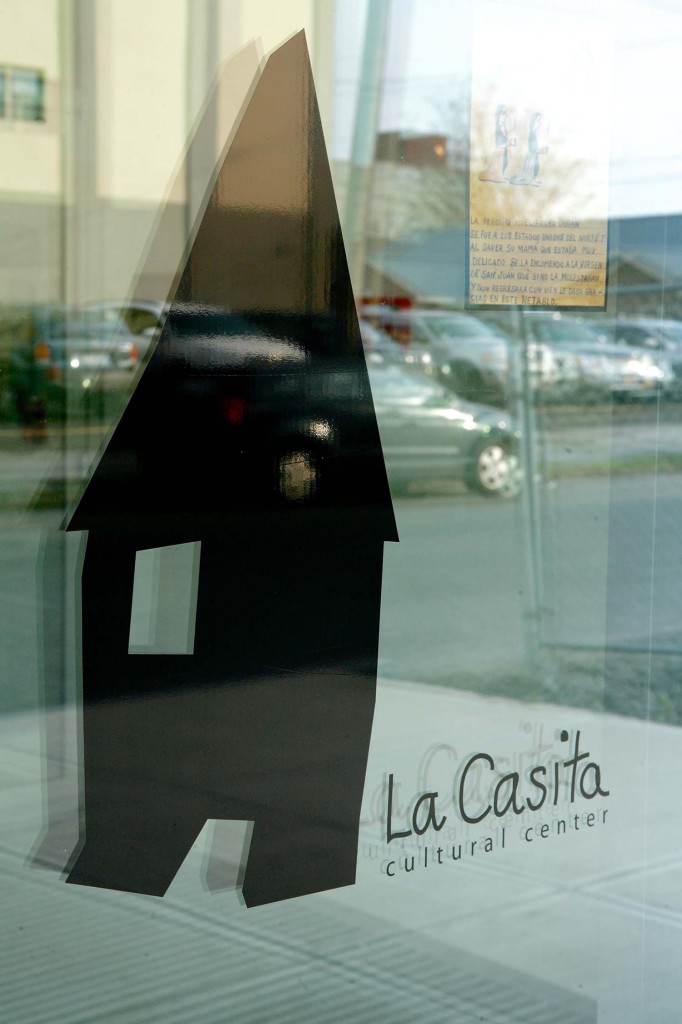
So the initiative invited its partners from the business community, the university and the surrounding Near West Side to a holiday party, complete with a carol sing-along in the parking lot, a Christmas lights display and plenty of cookies and punch inside the scrubbed-clean but empty bottom floor of the building. There were people wearing Carhartt jackets mingling with others wearing shiny shoes and silk ties, a reporter who was there recalls.
At first, there was a little shyness, and clumps of neighbors coalesced in the corners while the folks with SU connections chatted in the middle of the room. But after a while, everyone was smiling and introducing themselves. The sing-along brought everyone outside, shoulder to shoulder, and the whole thing seemed downright uplifting.
The important thing was that they all came, Jacobs said, “a great mix of people.” From that night, Jacobs said, the initiative seemed to gain momentum.
There are many ways to measure the initiative’s success at breaking down barriers that in the past separated the neighborhood from more affluent parts of the city, but one of Jacobs’ favorite signs of hope involves the Multicultural Block Party that’s been held at Skiddy Park the past four years. The first year it drew about 50 people, he recalls. Then 500, then 1,000 and, in August, 1,500.
SU has benefitted from its investment, Jacobs says, through the opportunities the initiative has given students. Hundreds of students have spent time with the children and adults in the neighborhood, using their talents in design, horticulture, photography, writing and a myriad of other skills to learn as well as to teach. The Near West Side Initiative has “acted as a filter and a bridge,” helping faculty and students match their energies to solve what residents identify as neighborhood needs.
An example of how that’s worked, Jacobs said, is the Little Free Libraries. Near West Side residents spoke up at neighborhood listening sessions about the need to get more books into the hands of youngsters and adults. The nearest public library–Mundy Branch, 1204 S. Geddes St.–is 10 or more blocks from the heart of the neighborhood, a long walk, especially for little kids.
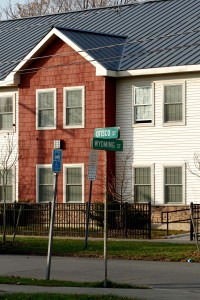
Jacobs passed that message to SU faculty, and the idea for little libraries featuring donated books was born. The little libraries are weather-proof kiosks which offer free books to anyone, along with the encouragement that donations of volumes will keep the system self-sustaining. Thanks to faculty from the iSchool, SU students and help from people and groups throughout Central New York, two Little Free Libraries operate, at 601 Tully St. and at Otisco and Niagara streets, Jacobs said.
The initiative was basically Cantor’s idea, neighborhood residents say. It grew out of a visit by Cantor to one of the regular town meetings at St. Lucy’s Church, 432 Gifford St., to air community problems and solutions.
“Truly, the Near West Side Initiative wouldn’t exist without her,” Jacobs said. “But she also had the foresight that SU could take the lead role, but that partners would have to come on board for it to succeed.”
The initiative is its own nonprofit, separate from SU, and it has its own governing board, Jacobs said–a good thing that keeps it focused on the neighborhood rather than becoming dominated by SU.
One of the tougher hurdles, Jacobs said, has been trying to overcome “a general sense of skepticism from Near West Side residents and the general community.” That mistrust has begun to fade, Jacobs feels, as the initiative has racked up tangible successes.
The Road Ahead
It was clear from the start of the Near West Side Initiative, said Marilyn Higgins, SU vice president for community engagement and economic development, that there was much to be done. The core mission was to infuse the neighborhood with new energy–intellectual and financial capital–without gentrifying it, she said.
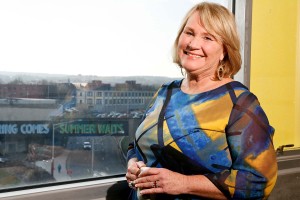
But Cantor’s vision of the project contained a subtle twist, one that Higgins said she took a while to understand: It was to create “a new kind of civic infrastructure to keep {the project} going,” Higgins said.
A good example of that is the initiative’s board, she said. It includes people from all parts of the community: West Siders, artists, tenant advocates, Native Americans, people of Hispanic background, retirement-age academics, business owners and young people. The diversity, she said, is among the board’s greatest assets.
“I call it an example of an unlikely coalition,” she said, whose hallmark is “dialogue and give-and-take to try and solve urban problems in new ways.”
It’s taken a while to hone the approach.
“In the beginning of the Near West Side Initiative,” she said, “the chancellor set out broad parameters, but then let us do the job. We had to become a unit, and that called for arguments.”
One of the first hurdles was the fear among West Siders and others that pumping money into the neighborhood would lead to pockets of high-end homes and businesses to serve the affluent to the exclusion of residents. Near West Siders had seen blue-sky proposals before that fell short of promises and eventually vanished, she said.
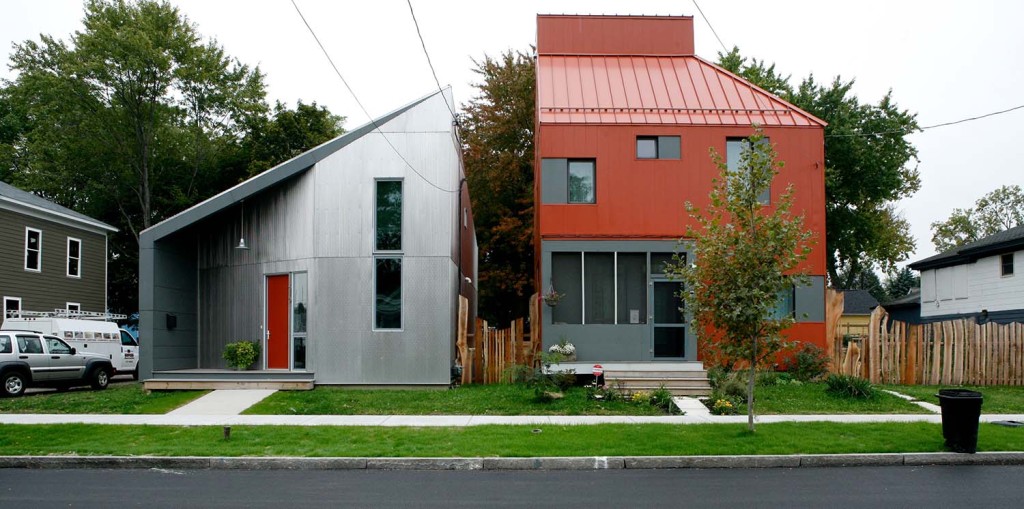
“There was cynicism in the neighborhood,” Higgins recalled. “No one really thought we’d be successful or serious. But we were able to find people who were passionate.”
The salvation of the neighborhood, she said, will be the influx of mixed-income families that she hopes will settle there. So far, most homeowners living in the rehabbed and new homes created by Home HeadQuarters and others were neighborhood or city residents to begin with, she said.
“There’s no question that the university support has been crucial,” to the good things that have happened in the neighborhood, she said, “but we did get more than $1 million from national foundations over the past year.”
The contributions of the initiative’s partners, such as National Grid, King + King Architects and Hiscock and Barclay law firm, have been invaluable, she added.
Higgins said 43 SU faculty members and 888 students have participated in projects through the initiative.
The Connective Corridor
The Near West Side is one of the stops on the Centro bus route that offers free rides from campus through the city along the Connective Corridor. The corridor seeks to connect the campus with a meandering path that includes a swath of East Genesee Street, Forman Park, Firefighters Park, Columbus Circle, Armory Square, the Near West Side and the “Civic Strip” that features the Pirro Convention Center and the Everson Museum of Art at the edge of downtown. Ridership on the buses has grown to 190,000 a year, according to Centro’s 2012-2013 annual report.
The Connective Corridor took longer to catch momentum, Higgins said, because so much of its work involved rules that govern federal grants, a major source of its financing. The first few years concentrated on capital projects, she said, “but the people part of the corridor is coming now.”
She cited as examples the CRAVE festival, in September; the third round of façade improvements; and the volunteer coalition working to keep Forman Park clean.
“There were many, many low points,” she said. “It wasn’t all sweetness and light.”
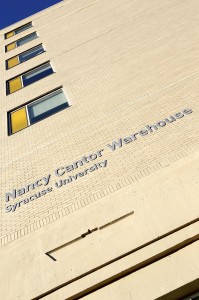
But the alliances among Onondaga County (which is managing the stormwater situation) and the city (it receives the bulk of project and design money from state and federal coffers) has been gaining strength, she said.
She said the investment of human capital has been impressive: 941 Syracuse University students have been involved in projects connected with the corridor.
One of the corridor’s low points came earlier this year, when a nasty fight erupted over who would pay to maintain the East Genesee Street improvements. After an outcry from business owners, the Syracuse Common Council in June rejected a plan to add an average of $3,100 to the tax bills of property owners along the Connective Corridor to pay for maintenance. That means the city will not weed or make sure Connective Corridor signs are graffiti-free, according to city officials.
Diane Paunovski’s business–Liberty Deli, on Irving Avenue–is a few steps away from Syracuse Stage and the Connective Corridor. She said her family members have been business owners just down the hill from Syracuse University since 1954, and the corridor’s reconstruction of streets, sidewalks and business facades has “added value and beautification of the streetscape.”
But she’s not a fan of how that construction project unfolded. Forman Park used to be a nice little oasis, she said, but with new landscaping and installations that were created by the Connective Corridor redevelopment, “now it’s high maintenance,” she said. Paunovski said she and other business owners felt like outsiders as the city and SU rolled out the project.
“I want to say it was a great effort,” she said, “but I can’t.”
When she and her neighbors learned that the upkeep would be paid by a special business improvement district tax on property owners along that part of the Connective Corridor, it was the last straw.
“We weren’t informed from the get-go,” she said.
She and other business owners scrambled to mobilize common councilors to intercede and find an alternative to the special tax. They succeeded in blocking that plan, but only after some sharp debate.
“Did it leave a sour taste in our mouths? Yeah,” she said. “Are we getting over it? Yeah.”
All About Outreach
Back in October, Melisa Moonan, of Skaneateles, hadn’t heard much about the Connective Corridor. But she spent the day discovering the artistic geography of Syracuse with her daughter, Cali Covington, 10. They joined right in with the “Thriller” zombies at the Redhouse Arts Center.
Moonan grew up in the Rochester area and had worked in Washington, D.C., for a while. She and her family had explored Syracuse a bit in the past, but she found herself intrigued by the long list of CRAVE festival art happenings spreading from campus into downtown and beyond after looking over the map that was handed to her that morning.
It’s too bad that there wasn’t something like the Connective Corridor during her college days in Baltimore, Moonan said. She sees the upside of such a thing in Syracuse.
“The benefit could be that the students come back to live here, if they find they like it,” Moonan said.
Two Days on the Near West Side
Do contrasts present evidence of progress?
Gray clouds hang low in the sky on Oct. 2. The clouds skate on a mild breeze that kicks up dust on Shonnard Street and stirs newspapers, fast-food debris and brownish leaves in a slow circle at the curb.
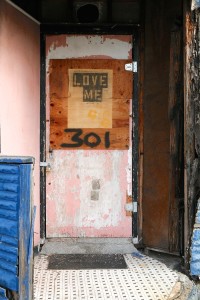
Four houses in the 400 block of Shonnard tell the neighborhood’s secrets.
At one house, three wooden steps wide enough for two people to climb to the porch are weather-beaten, brushed clean of paint. Scrap plywood is nailed to the windows and doorways; the house seems vacant.
Across the street, there is a house whose beige plastic siding is fairly new. Someone has mown the lawn in the past week. A satellite T.V. dish sits on the rooftop, and the porch light is still glowing at 11:30 a.m.
A few doors down, healthy crimson roses bloom in a bush as tall as a ninth-grader. The roses complement the two-story brick house that sits only a few feet from the street. Its façade is painted appropriately, the color called “Brick Red” from the 64-crayon box. Not a single crack or flake peeks out from its walls, and a plastic angel who is hugging her knees rests in the front yard’s grass. But a Subway wrapper and a cardboard cup also sit snugly there; the straw that pokes from the plastic lid reclines against the house’s foundation. The half-dozen other pieces of trash call out the names of other fast-food joints, including McDonald’s.
Two houses away, blue plastic tarps in shreds wave like flags from upper-story windows, which yawn wide because the glass has long ago been smashed to shards.
And three blocks away on the next street parallel, Merriman Avenue, stand 10 houses in a row that shine with fresh paint and new shingles, each one with a groomed lawn and stainless steel chain-link fences.
The contrast is startling and creates a harmony that fairly sings. Someone (more than a few someones) cares about this stretch of the neighborhood that bends gently toward West and Seymour and Gifford streets.
On a gray Saturday morning a few weeks later in October, the new WCNY headquarters at 415 W. Fayette St. is modestly bustling with activity. A workshop, part of the Imagining America national conference that has drawn 400 people from across the country, is convening inside. Bounded by West Fayette, Wyoming, Marcellus and South West streets, it’s a behemoth of a building that occupies a square block on the very edge of the Near West Side. It’s easily visible from the highways that spread west from downtown, and it’s something of a billboard about what is happening in the neighborhood.
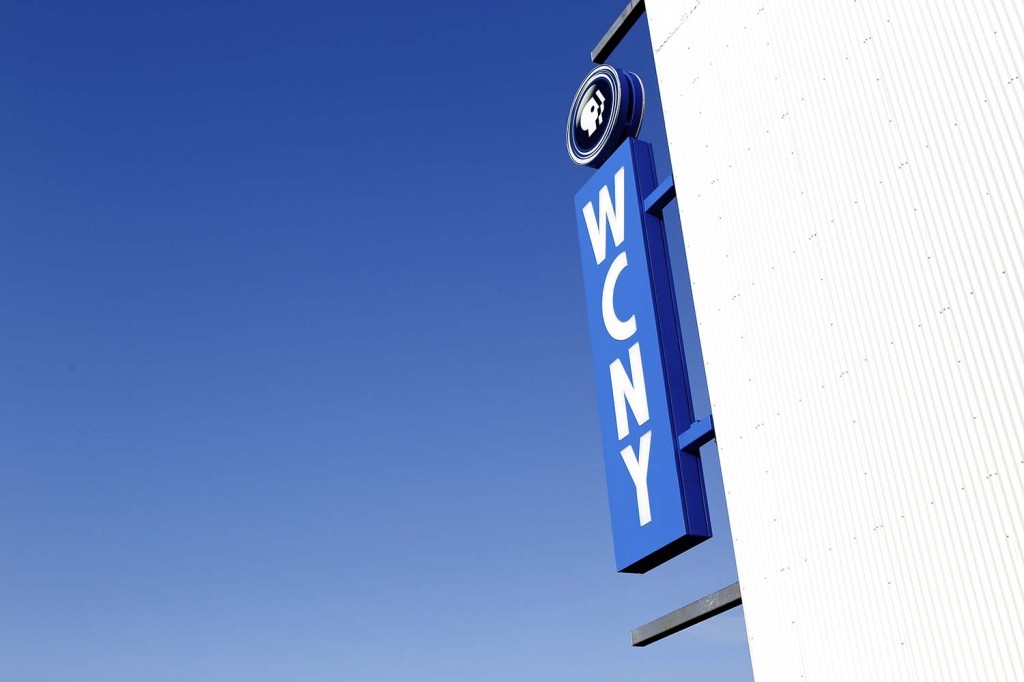
An unfinished wooden frame for an entranceway to the building’s plaza stands on the Wyoming Street side, but the remainder of the three-story building is gleaming white. A brand new concrete walkway leads up to the lobby of WCNY’s new home. A billboard across the street proclaims “The Killing Must Stop! Syracuse Truce, a better future.”
The conference room’s floor is blond hardwood and finished in a satin stain, the walls are covered in battleship gray fabric and recessed track lighting spreads light. The room–and others like it that line the hallways inside the building–give off a muted modern vibe. Two wooden-and-iron-bolt support columns jut from the floor to the ceiling, newly painted white but preserving the punctures and nicks they accumulated over the decades when the building was used to store plumbing and building materials. Some of the grime and splotches of green paint roughly show through. Glass and aluminum walkways allow light into the building.
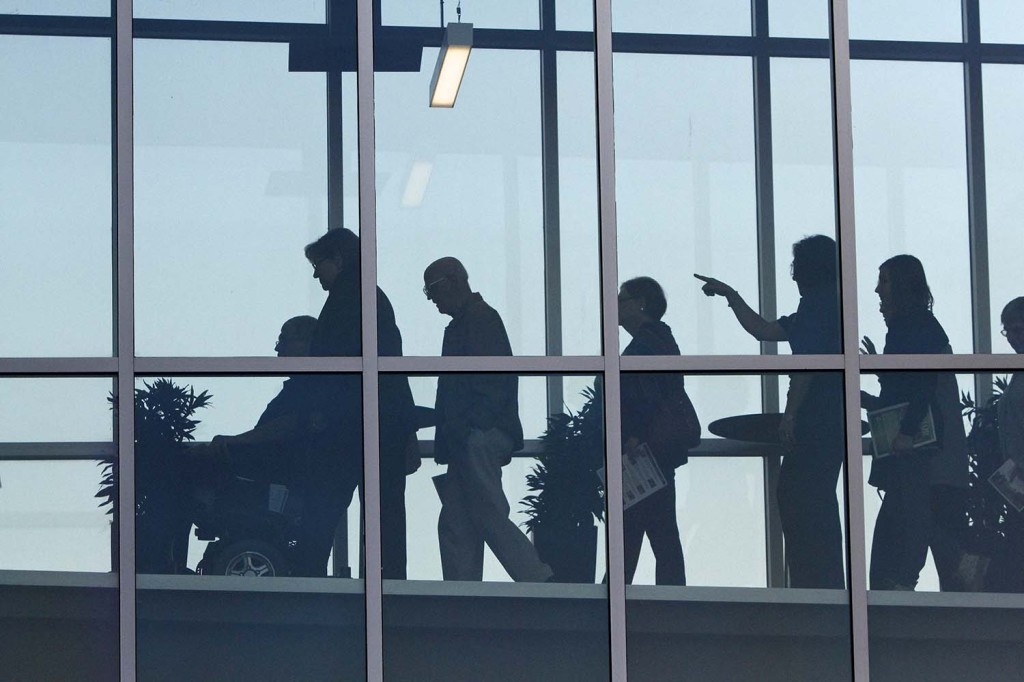
A block away, at Tully and Wyoming streets, wild graffiti adorns the walls of a brick building advertised by an outdoor sign as “available.” The electric blue, raspberry and glowing green and silver sprayings look more artistic than vulgar handiwork (someone signed their handwork with “heart-Mary-heart, JJ.”
Across the street sit blocks of quiet townhouses whose lawns are trim and nearly litter-free.
At 10:55 a.m., a Connective Corridor bus swings down Wyoming Street. It appears to be riderless.
Read more Syracuse University related news below:
Click HERE to read Ed Griffin-Nolan’s “What’s The Rush” (naming the SU Warehouse after Nancy Cantor)
Click HERE to read Ty Marshal’s “Dear Syracuse with Love” (a project of the Connective Corridor/Scholarship in Action)
Click HERE to read “Off Campus” (a social experiment of student writers paying it forward)


